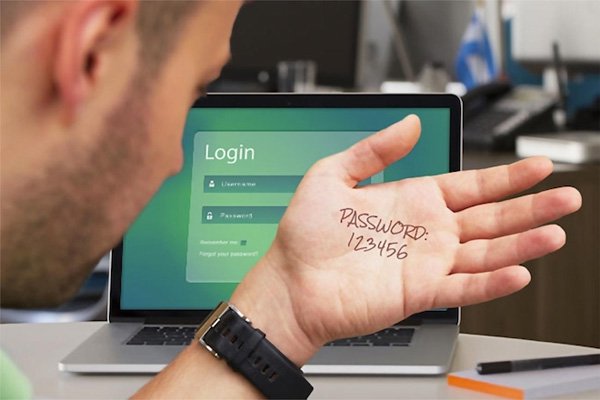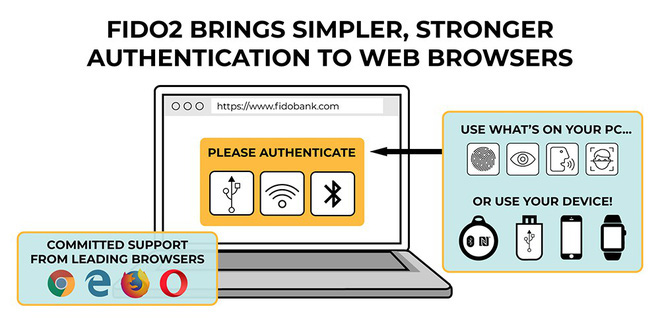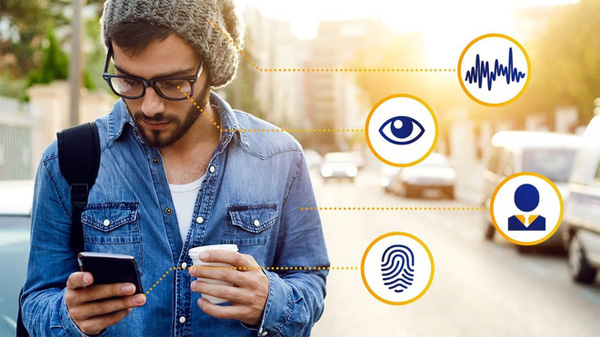The password will disappear and the smartphone will help you log in to all accounts on the web in the future
Currently, most people have to try to remember a few passwords to use them to log in their accounts daily. With the desire for password disappearance for 'light-headed' users, World Wide Web Consortium (W3C), an international organization for web standards established by Tim Berners-Lee and FIDO Alliance have teamed up to gives a more optimal solution for a password-based problem, using a mobile device to authenticate users' web-based accounts.
 The password will disappear and the smartphone will help you log in to all accounts on the web in the future Picture 1
The password will disappear and the smartphone will help you log in to all accounts on the web in the future Picture 1
Currently, we still have to enter these security characters.
Currently, many places are using two-layer security method with code verification step on smartphones. But the difference in W3C's new solution is that it uses the web platform instead of the current user account. Therefore, any website can take advantage.
 The password will disappear and the smartphone will help you log in to all accounts on the web in the future Picture 2
The password will disappear and the smartphone will help you log in to all accounts on the web in the future Picture 2
To better understand the new W3C security method, find out how this smartphone login method works.
- You access a website on your smartphone device and create a login account
- A message will appear: "Do you want to register the current device for this website?". Please agree to this registration, then access this website again on your laptop.
- You only need to enter the account name, no password is required. Then, a message will appear on your smartphone with the content: "Do you want to log in to this abc.com website?".
- You press accept and confirm again with smartphone opening password / biometric method such as fingerprint, iris, face, .
- The website you access from your laptop will automatically go into your account and then the password is the smartphone you are using.
Although the process seems more complicated than the usual password entry, it is more secure and you will not have to worry about not remembering the password.
 The password will disappear and the smartphone will help you log in to all accounts on the web in the future Picture 3
The password will disappear and the smartphone will help you log in to all accounts on the web in the future Picture 3
This method allows users to manage devices with authentication rights to login. That is, if you accidentally lose your smartphone, you just need to delete your smartphone from the list that allows authentication as all your accounts will be safe.
This method uses a web platform so it needs support from browsers. Currently, only Mozilla's Firefox is available, the remaining browsers like Chrome, Edge, Opera will soon support in the near future.
See more:
- How to encrypt 256-bit AES files right on Chrome browser
- Instagram is about to add a new feature that allows users to download personal data
- The risk of being "reverse tracked", revealing a private image from a security camera
You should read it
- Microsoft: 150 million people are using the password-free login forms each month
- Pros and cons of passwordless authentication
- Already able to login to a Microsoft account without a password
- Check the security of the password
- Advanced Twitter account security guide
- What is login without password? Is it really safe?
- How to Turn Off Password Login on a Mac
- How to limit the number of failed login attempts on Windows 10
- Instructions on how to login to your computer when you forget your password
- How to login 2 Zalo accounts on the phone
- Configure the 'brain damage' PIN to log on to Windows 10
- What will you do when you forget your Mac OS X login password
May be interested

Apple launched iOS 11.4 beta 2, users can download

For the first time, Microsoft developed a customized and integrated Linux version of its product after 45 years

How valuable is the user's personal data?

Russia blocked 15.8 million IPs Amazon and Google to block Telegram

Microsoft delayed updating Windows 10 Spring Creators Update due to a dead blue screen error

AR and VR, the most advanced technologies in the world, but with unpredictable risks?






 Want to disappear from the Internet, do you think erasing your social network account is done?
Want to disappear from the Internet, do you think erasing your social network account is done? Should you use a password generator to protect your online accounts?
Should you use a password generator to protect your online accounts? Mistakes when using a password
Mistakes when using a password Check the security of the password
Check the security of the password In the future, these excess body parts may completely disappear due to evolution
In the future, these excess body parts may completely disappear due to evolution 5 best password management apps for iOS
5 best password management apps for iOS